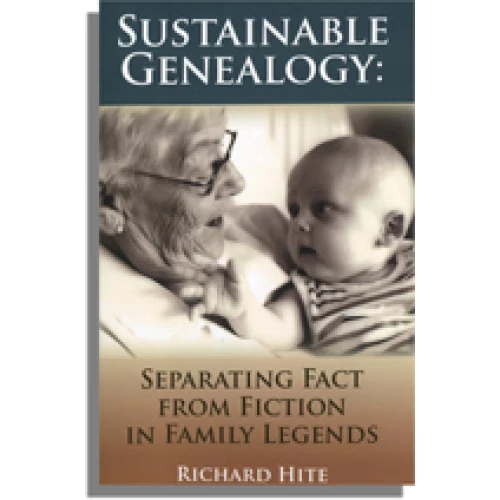There are a lot of textbooks that describe how to find your ancestors; this one by Richard Hite clarifies how not to. In short, Sustainable Genealogy explains how to avoid the traps many family historians can fall into. Whether it’s a proud family legend, a venerable publication, or the claims of an Internet family tree, the unsubstantiated genealogical source is like a house of sticks before the Big Bad Wolf–it won’t stand up. As Mr. Hite demonstrates in this collection of case studies, many are the “oral traditions that have fallen by the wayside under the lens of careful research in primary sources and more recently, DNA testing.”
Here are just a few of the lessons from Sustainable Genealogy that can protect you along genealogy’s primrose path:
- Recognizing when identical surnames conceal different nationalities
- Understanding when and why death certificates can be “wrong”
- Knowing when ancestors’ middle names are not family names
- Respecting the role of geography in establishing ancestral ties
- Taking the genealogies in 19th-century “mug books” with a grain of salt
- Accepting that all relationships must be chronologically plausible
Many of the instructions Mr. Hite has to offer came only after he spent considerable time and effort in finding the correct trail to his own forebears; however, as esteemed genealogist Hank Jones explains in the Foreword to the book, they have value for researchers far and wide:
“Richard’s critical eagle-eye served him well in this task. He was fighting the old “Well if my last name is Boone, I must be a descendant of Daniel Boone” syndrome that pops up so often in our field. Like a skilled surgeon, he took out his genealogical scalpel and dissected some of the erroneous Hite family traditions to separate fiction from fact and thus Jost Hite (prominent early settler of the Shenandoah Valley) from some of the other completely different, later-arriving Hite lines. This book covers the methodology he used, the questions he asked, and–most important of all–how his wisdom might help YOU as you climb your own family tree.
“You’ll find lots of genealogical bases beyond Hite lore covered here: how sometimes the origins of certain families are attributed to the wrong ethnic group; how the very common two or three immigrant brothers tradition and their geographic dispersal is often attributed to the wrong side of the family tree; what to do when even the primary sources are in error; how Native American ancestry is fun to talk about, but hard to prove; and on and on in fascinating detail.
“Reading Richard’s thoughts and experiences cannot help but lead you into taking a more critical look at the accuracy and veracity of the sources you use to compile your own family’s genealogy. I guarantee you that taking heed of the cautions cited and putting into practice the lessons learned in this book will make you all much better family historians and ensure that your genealogical legacy will be one to be trusted.”


